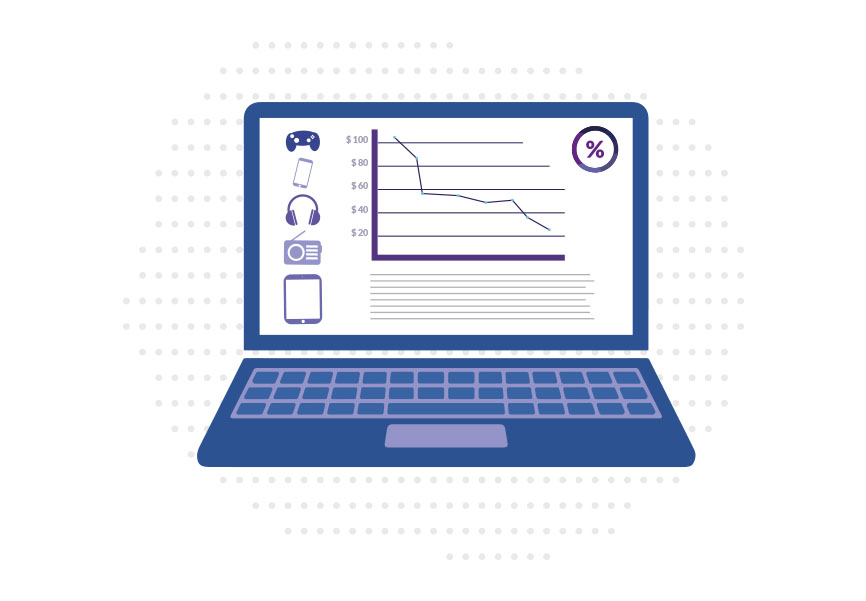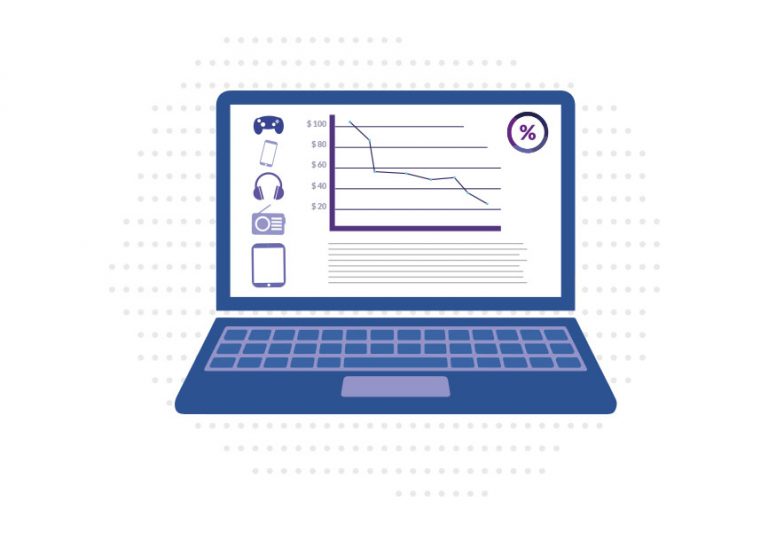How To Beat Your Competition Without Lowering The Prices: 6 Tactics
- 16 August 2023
Trying to get ahead of your competition by lowering prices can be effective short-term, but in the long run, it’s a bad decision for you, and in fact, for the whole market. Thankfully, there are other ways to get ahead and outrun other competitors in your sector. And that’s what we want to discuss in this post.
Let’s talk about lowering the prices for a moment. What’s at the end of this road? Just two scenarios:
- You start making or providing worse products and services to make up for the lost profit.
- Others do the same thing, and you have to lower your prices again, ultimately leading to price wars.
In the first scenario, customers see the lower quality of your products, and they look for alternatives, buy less from you, or even abandon your brand altogether. Simultaneously, increasing the price again is extremely difficult (people get used to the lower prices pretty quickly) without aggravating and possibly even losing customers.
In the second scenario, all or the vast majority of competitors in the given market follow the same path, and the overall quality of your sector goes down. Plus, because of the price war, all players make less money than they should.
When is lowering the price a good option?
The short answer is when you’re new. When you want to start with a brand-new product or service, you need to get the first people (so-called early adopters) on board. In such a situation, lowering the price is your only option. This strategy is called penetration pricing, and even big players like Netflix use it.
Take a look at this chart provided by Statista:

Source: https://www.statista.com/chart/16684/netflix-subscription-prices-in-the-united-states/
When they were at the very beginning of their market presence, they needed people to sign up. That’s why the service was very cheap (less than $8 per month), and there was a free trial month available. Today, the free trial is gone, and Netflix is almost twice as expensive. That’s what market penetration is all about. But as you can see on the same chart, Netflix was raising prices gradually and regularly, so it was a short-term strategy, not the vision for the company’s final pricing.
There is one more scenario where lowering the prices makes sense. It’s called price skimming, and it’s all about replacing an old product with the new one. The electronics world is a perfect example. At first, DVD players were very expensive, now you can buy one for less than $100. It’s the same story with other products that become outdated and, as a result, less popular.
If not lowering the price, then what? 5 tactics you can use
In many situations, the price is very important, but it’s not the only factor that customers pay attention to. You can use other factors to tip the scales in your favor. These factors comprise:
- Your USP
- Strong brand
- Exceptional customer service and CX
- Niche product
- Strategic partnerships
Let’s have a closer look at them.
Your USP
This acronym stands for unique selling proposition. In short, that’s what makes you stand out from your competition. If your brand promises some exceptional or non-standard value, you can raise your prices. This is called value-based pricing, and it’s very common across all premium and luxury brands. Think about it – are Hermes handbags more functional than the ones you can find at Walmart? Not necessarily, but that’s not the point. Hermes offers something more, and therefore, they can price their product accordingly.
We’re not saying that you have to be the Hermes of your sector, but what you should do is look for a specific distinguishing feature. Perhaps it’s the way your products are made? Or maybe you offer an extended and broad warranty? Or provide customers with broad customization options? All of that can be a good USP and, therefore, a good reason not to lower your prices.
Strong brand
Building a strong brand is always a good marketing strategy. A strong and valued brand enables you to dictate your terms. Think of Mercedes, for example. Their cars are not cheap because they are known for the high quality of their vehicles. Mercedes will likely never decrease their prices because they don’t have to. There will always be people who will want to buy a Mercedes and not any other car. That’s what a strong brand is about.
And one way to build a strong brand is by providing fantastic customer service and CX.
Exceptional customer service
Selling high-quality products is one thing. Taking care of your customers is the other. Make sure every customer feels taken care of in your company. It starts with a well-designed and easy purchasing process. Good customer service is also about providing diverse communication channels and assisting customers when they need you, as quickly as possible.
Good customer service is indispensable to achieving excellent CX (customer experience). We discuss this question further in this article on the Dealavo blog: Customer loyalty in your e-commerce – how to do it.
Target niche markets
If you can make your offer tailored to a specific target audience or niche, you don’t have to worry about lowering your prices. That’s because you will likely have fewer competitors, and customers are usually willing to pay more for a tailor-made product/service.
Think of chef knives, for example. Again, the same question – can you cut meat and tomatoes with ordinary knives? Sure you can, but chef knives are designed specifically for professionals; they are sharper, lighter, and more resistant. And that’s worth the higher price.
If you don’t want to lower your prices, think of targeting a specific segment/niche and create a product just for this segment.
Form strategic partnerships
The essence of forming strategic partnerships lies in the synergy that arises when two or more entities pool their strengths to create a sum greater than their parts. Collaborations can take various forms, such as:
- Co-marketing initiatives
- Joint product development
- Shared distribution channels
- Cross-promotional campaigns.
By forming a strategic partnership, your company can tap into new markets and reach all-new target audiences. Think outside the box and come up with creative ideas of companies that you can partner with to achieve the synergy effect. A good example of such a partnership is Apple and Nike. Back in 2016, both companies launched Apple Watch Nike+, a smartwatch designed specifically for runners and athletes.

Source: https://www.apple.com/newsroom/2016/09/apple-nike-launch-apple-watch-nike/
Can you come up with a similar idea? It doesn’t have to be a big collaboration between billion-dollar companies, but if you can think of a cooperation idea that’s beneficial for both you and your partner, it’s definitely worth looking into it.
In this post, we’ve mentioned five ways of getting ahead of your competition without lowering your prices. But there is one more option you can benefit from as well, and that’s our backyard.
Price monitoring
What is price monitoring?
Online price monitoring or price tracking is a process in which a company analyses a specific market, focusing on the prices of products available for sale online. Manually or by using specific tools, specialists investigate products in e-shops, online marketplaces, and on price comparison websites. The information that is collected allows companies to determine whether their offers are attractive to the customer when compared to the offers of their competitors. They can then modify their pricing strategies and anticipate competitor moves in the future.
What are the benefits of price monitoring?
There are many advantages that should encourage businesses to conduct price monitoring activities. We list some of the benefits below:
- Get valuable insights into your competition: by analysing current and historical pricing information, you can anticipate how your competition will behave in the future. For example, you will be able to determine the exact day when your competitors launch their special offers.
- Seize easy opportunities:
- Identify those of your products that require only an insignificant price decrease to jump to the top position on product listings.
- Learn where you can increase prices while still remaining first in product rankings.
- Automate pricing for your products: some tools will allow you to automatically set prices on the basis of conditions relevant to your business and expectations.
- Your offer is always up to date: by scanning the market, you ensure that products in your offer are still attractive to your customer base.
- …and more.
Price competition
If you have an e-commerce business, sooner or later you might participate in a price competition with other companies. A common recent example were the price wars between Lidl and Ikea, and Lidl and Biedronka, which resonated throughout Germany and Poland, respectively. Price monitoring tools prove invaluable in such situations as they allow you to quickly identify the moves of your competition and react accordingly. After all, the price of a product is the single most important factor that determines whether a customer makes a purchase or not.
Dealavo tool
Price monitoring tools give you a number of advantages over your competition, leading to better offers and eventually – higher sales. Consider the possibilities offered by the Dealavo tool. With our solution, you can monitor the prices of competitor products from sources of your interest – these can be marketplaces such as Amazon or Allegro, price comparison pages like Ceneo, or individual websites.
The tool provides up-to-date information on pricing, but not only will you know the costs of competitor products (possibly with delivery costs too!), you will also be able to identify the days when competitor promotions go live, which means you can plan ahead and prepare better offers. With 11 alerts, you can easily filter the information for data important to your business at a specific point in time. Historical data will allow you to analyse past prices to predict future trends. Dynamic pricing will allow you to automate price settings, relieving you or your employees from the tedious and time-consuming task, while ensuring you make price changes as fast as possible. Email alerts will keep you informed on the changes in your competitor moves that are particularly interesting to you. Let’s have a look at some of the functionalities in greater detail.
Increase prices for higher revenue while remaining ahead of others
If you have products that are already on top of product listings, there is a high chance you can increase their price without losing your dominant position. The Dealavo tool will show you which of your products are at the top, and which product of your competition is second in line. It will then suggest a price increase for your product, making sure it is still lower than the second best offer currently available. By doing so, you get more out of your product while remaining the best offer on the market. Simple, yet effective.
Decrease prices slightly to outmatch your competition
With our innovative alert called “Clever move” you will quickly discover opportunities among your current offers to overtake your competition with just a minor price decrease. By selecting this feature in our solution, you receive a list of products for which your offer is only slightly worse than the one offered by another company. You can then decide whether you would like to decrease the price slightly to jump to the top of product listings, taking customers away from your competition with a better offer.
How to avoid losing business to your competition
Aside from making sure your products are visible in the market of your choice, the most important thing is to make sure your offers are at least as good as your competitors’. This is why price monitoring and constant price management are so important. With the Dealavo tool, you can rest assured that you will always be up to date with the pricing information regarding products of interest offered by your competition. You will be able to react quickly to market changes and to establish clear and effective strategies for the future.
Do you want to know more? Book a demo of our platform today!





